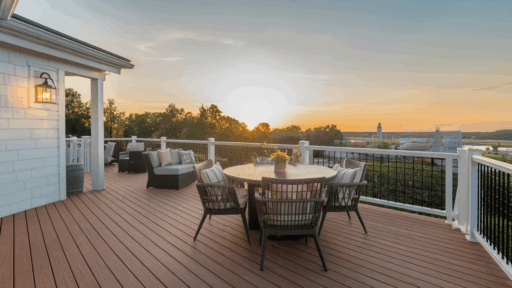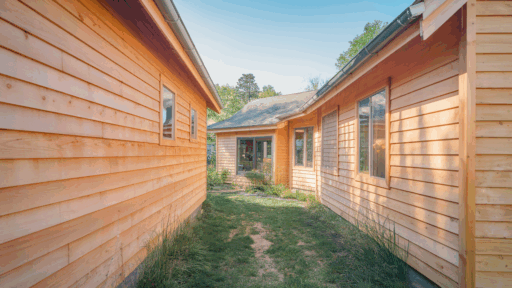Choosing a siding color is a big deal; it’s the first thing people notice about your home.
The right color can enhance curb appeal, increase your home’s value, and set the tone for the entire exterior.
When I was selecting siding for my own home, I wanted something that reflected my style but also complemented the overall design and the neighborhood.
When building from scratch or updating an older house, it’s essential to select a color that feels right to you.
Lately, I’ve noticed top trends include soft neutrals like greige and taupe, earthy greens and browns, and bold picks like navy blue or charcoal black.
These shades look great with different styles, whether it’s modern, farmhouse, or something in between.
To help you decide, I’ve pulled together some of the most popular siding colors out there, along with ideas for how to use them.
Thinking about giving your home’s exterior a fresh look? Start with one of these siding colors homeowners really love!
Popular Siding Colors for Beautiful Homes
From warm neutrals to bold modern hues, these popular options can refresh your exterior and create a welcoming first impression.
1. Classic White
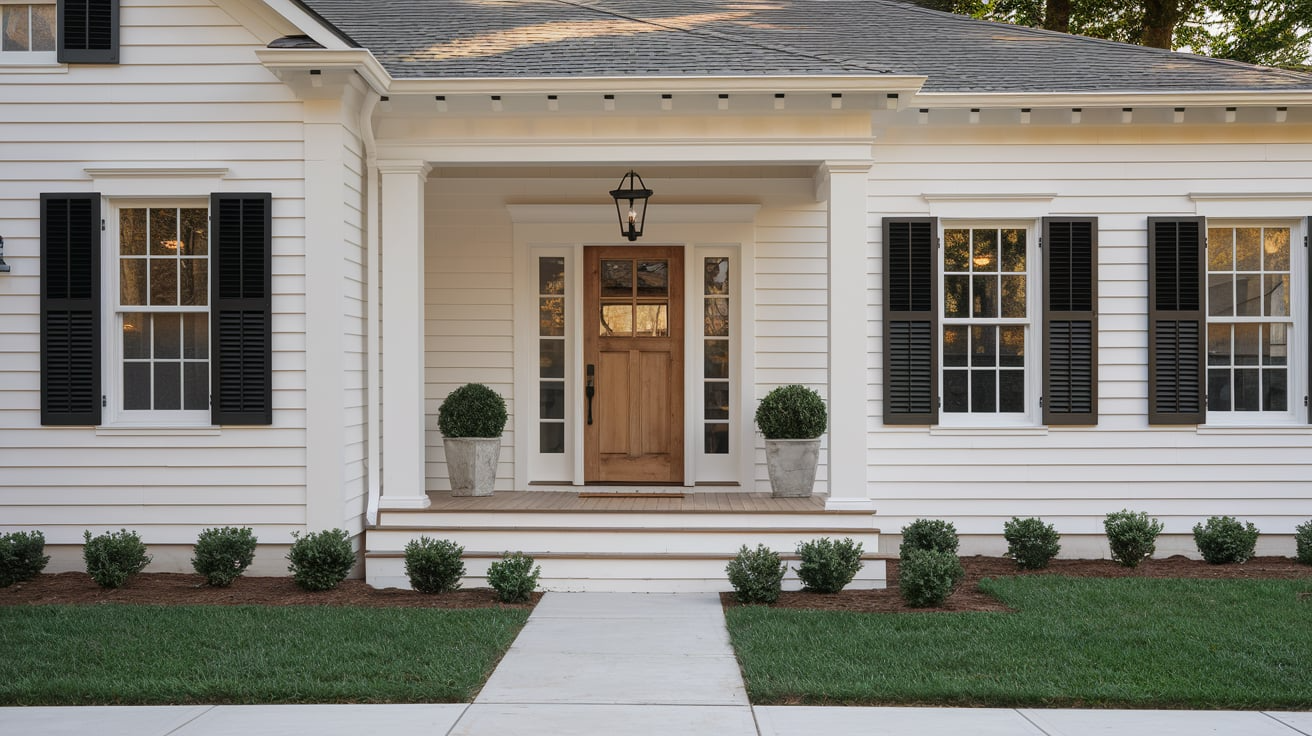
Classic white siding offers a timeless, clean look that works with nearly any home style.
It creates high contrast with black shutters and wood doors while highlighting architectural details.
This crisp neutral is perfect if you want a bright, welcoming exterior that pairs effortlessly with any trim or roofing material.
2. Light Gray
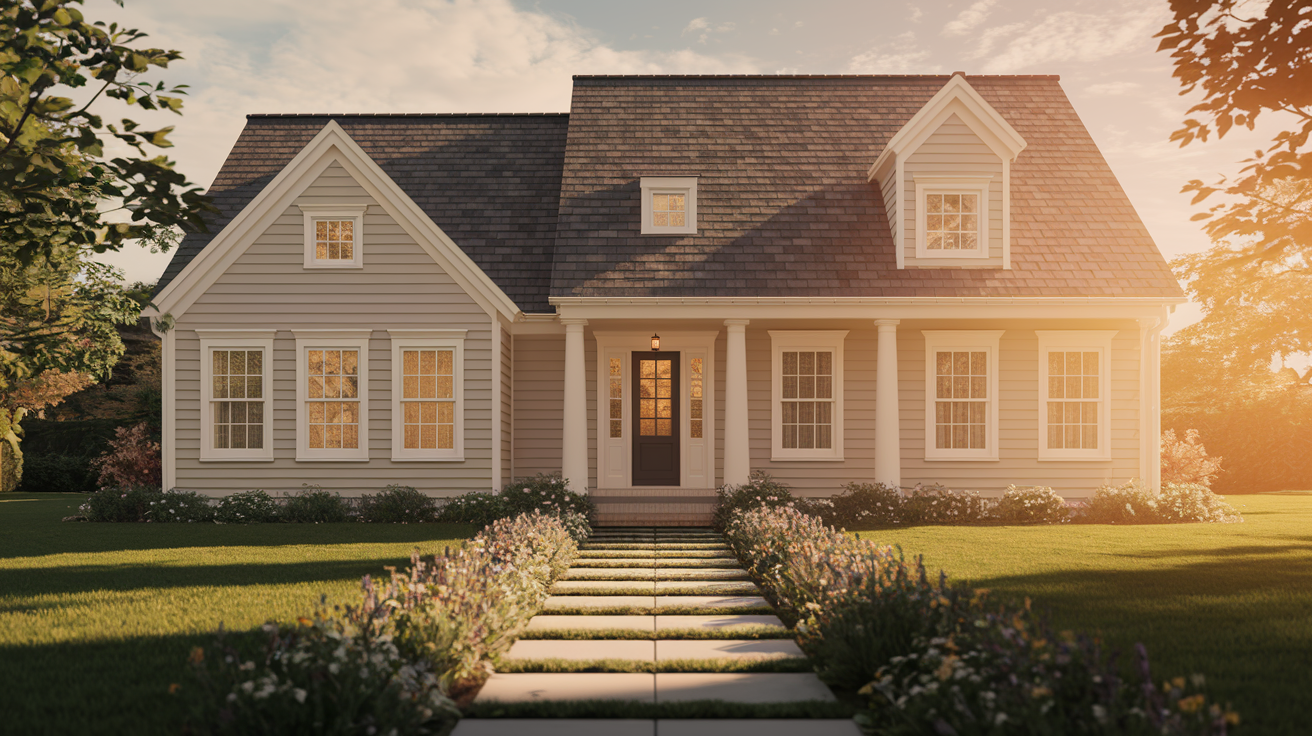
Light gray siding is calm, cool, and versatile. Its soft tone adds a modern edge while maintaining a traditional charm. You can easily match it with white, navy, or black accents.
Whether your home is coastal, contemporary, or colonial, this subtle gray gives your exterior a clean, fresh finish.
3. Greige

Greige blends gray and beige into a warm, balanced neutral that suits any style.
It works equally well with warm or cool trim colors and is perfect for farmhouse, transitional, or craftsman homes.
This flexible shade adds depth and warmth without feeling too dark, making it a popular siding choice.
4. Warm Taupe

Warm taupe brings an earthy richness to your home’s exterior. With its soft blend of gray and brown, it adds cozy warmth without going too bold.
Pair it with creamy trim, brick, or natural stone for a grounded, inviting look that feels both modern and classic.
5. Ivory Cream

Ivory cream is soft, warm, and welcoming. This classic siding shade adds subtle elegance to any home, particularly those with traditional or cottage styles.
It glows gently in sunlight and pairs beautifully with rich roof tones, natural wood, or darker trim colors. Ideal for creating a timeless, comfortable exterior.
6. Antique White

Antique white offers a softer, aged look compared to pure white. This creamy tone adds historic charm and warmth to colonial, craftsman, or cottage homes.
It pairs beautifully with muted blues, red brick, and warm-toned roofs, creating a cozy, lived-in feel that never goes out of style.
7. Pebble Gray
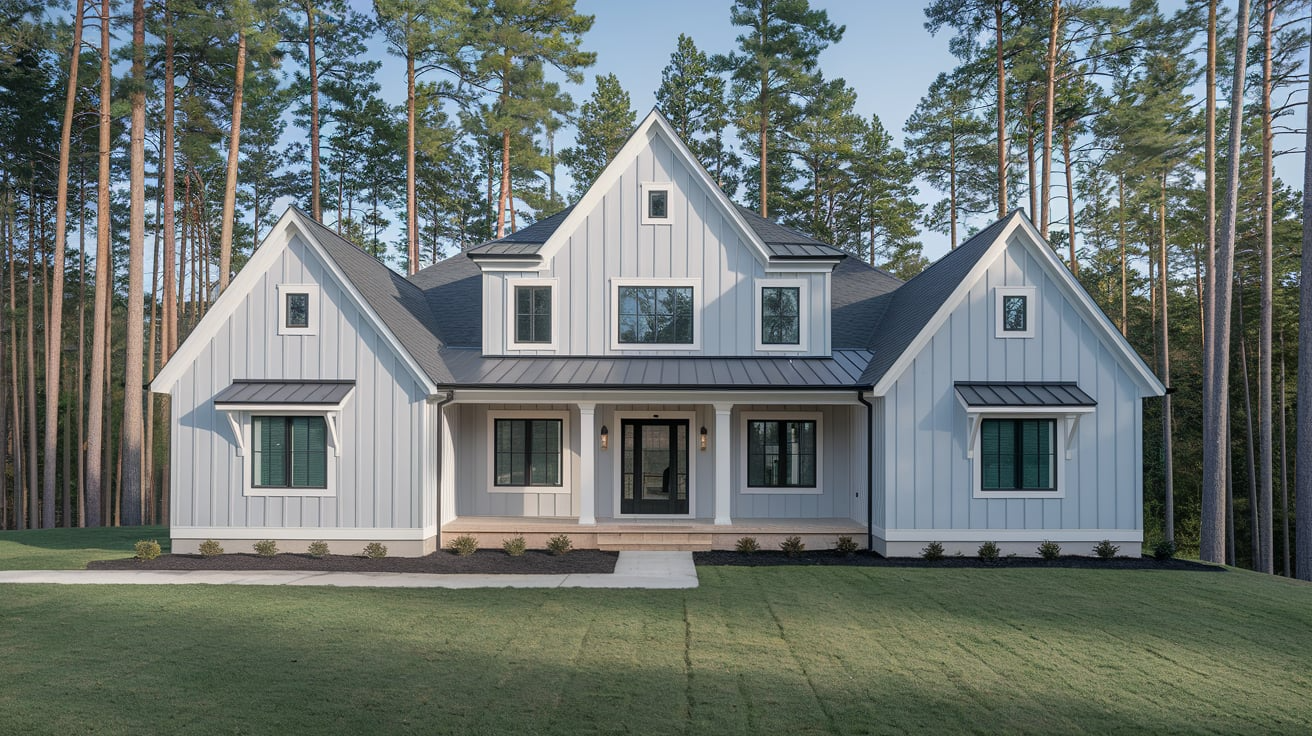
Pebble gray is a cool, medium-toned neutral that brings quiet sophistication. It’s understated but far from boring, offering a modern edge without overwhelming.
This color is a perfect backdrop for bold doors and shutters in black, navy, or red, making your exterior feel updated yet timeless.
8. Misty Gray
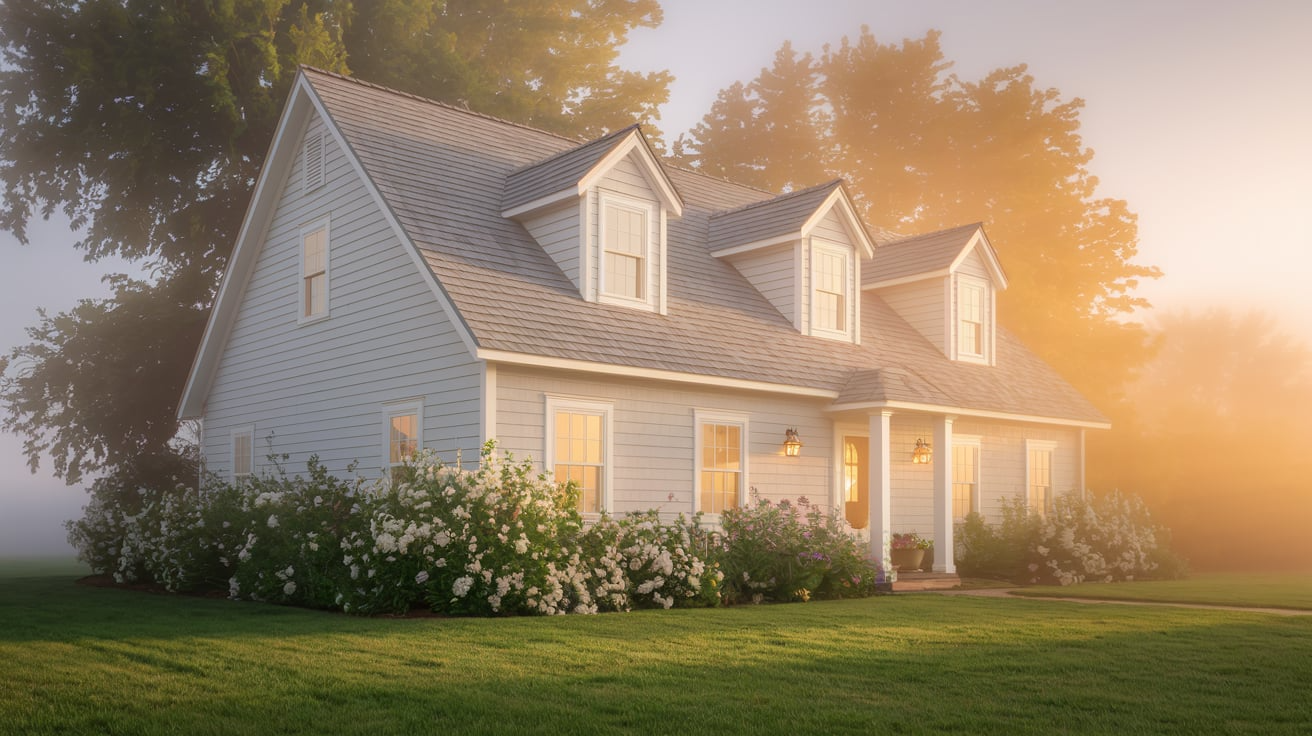
Misty gray feels soft and airy, with a hint of warmth that makes it feel extra inviting.
This light gray works beautifully on coastal homes or any place with abundant natural light.
It complements white trim, blue shutters, or even wood accents for a fresh and breezy look.
9. Sage Green

Sage green siding offers a calming, earthy feel that blends effortlessly with nature. This muted green is ideal for craftsman, cottage, or farmhouse homes.
It pairs well with stone paths, wood details, and off-white trim, giving your home a grounded, peaceful appearance that feels both natural and refined.
10. Green
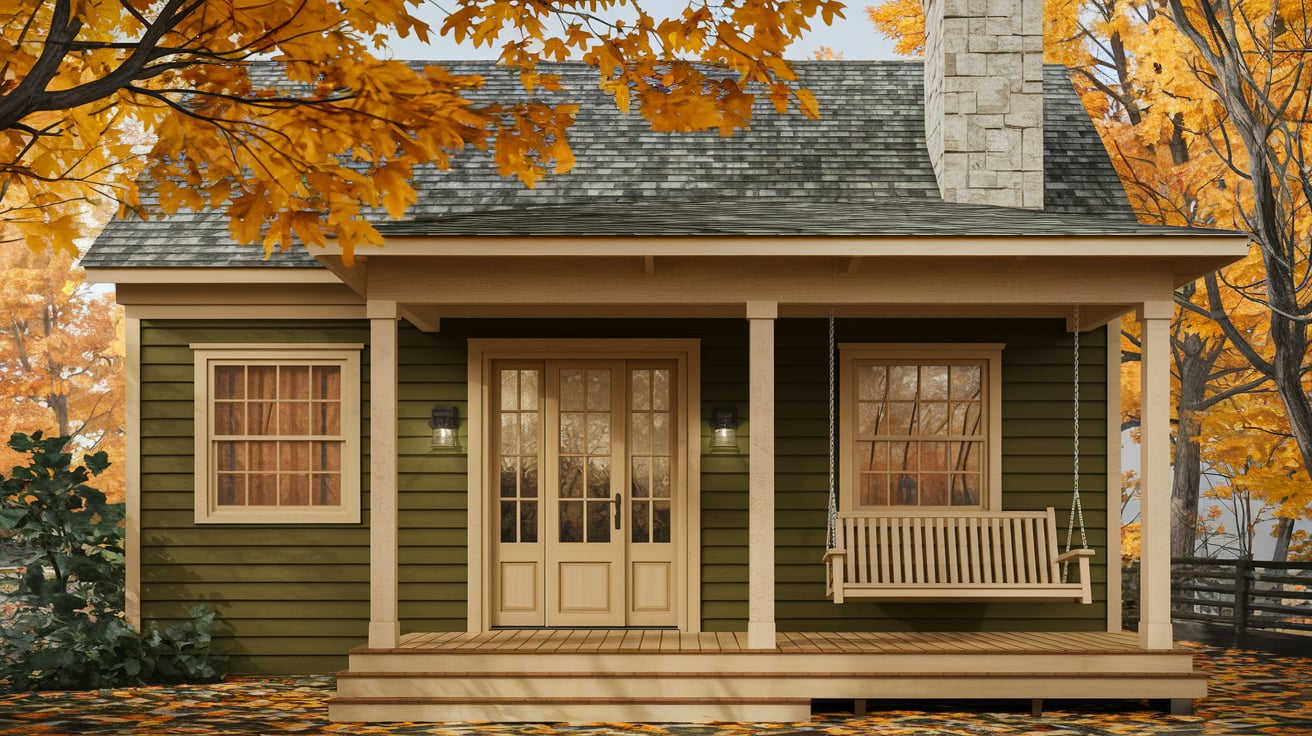
A deeper take on green, this rich shade adds rustic charm and personality. Olive green works beautifully with wood accents, stonework, and creamy white trim.
It’s a great siding color for homes in wooded or rural areas and adds a cozy, nature-inspired touch without feeling too bold.
11. Forest Green
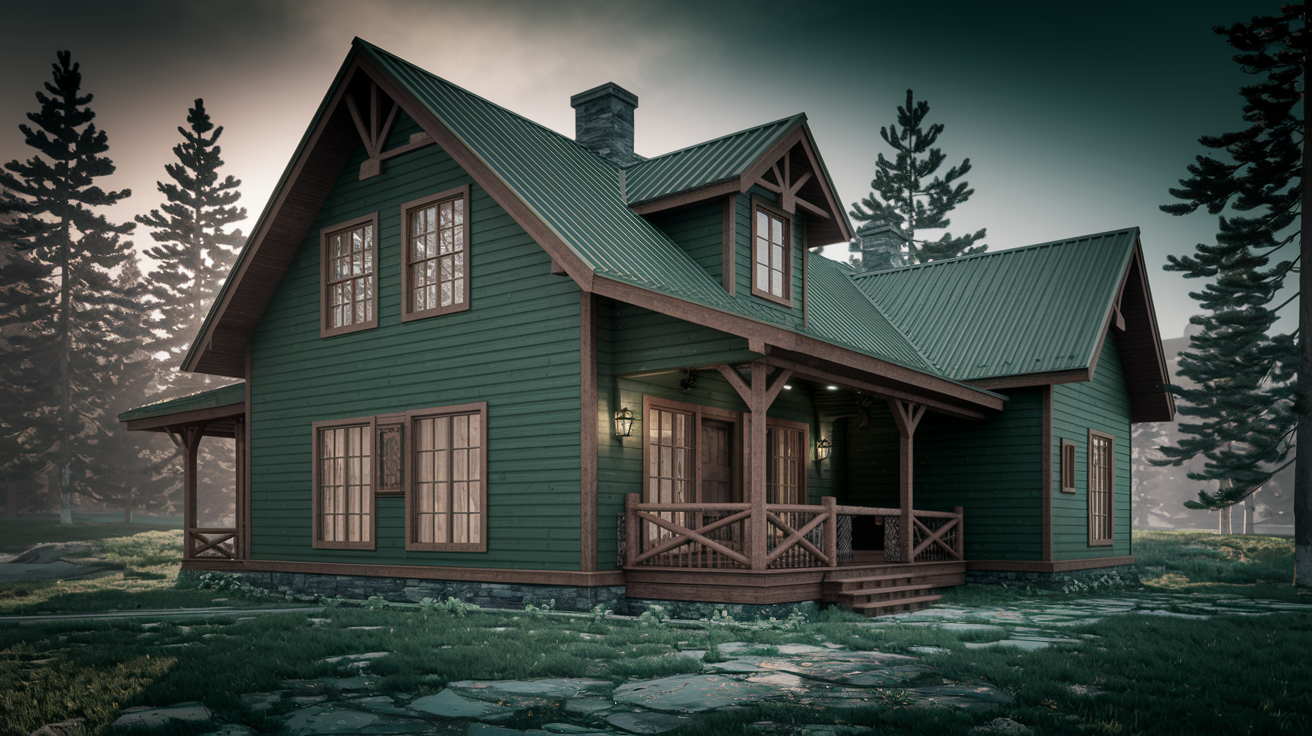
Forest green makes a bold, elegant statement while blending seamlessly into wooded or mountain settings.
Its deep, moody tone adds instant character and pairs wonderfully with stone chimneys, dark roofs, or warm wood features.
Ideal for traditional or lodge-style homes that want a natural, stately look.
12. Cedarwood

Cedarwood siding brings the look of natural wood without the upkeep.
With reddish undertones, it mimics real cedar planks and adds a cozy, rustic touch to craftsman, cabin, or mountain homes.
It pairs beautifully with stone, brown trim, or green landscaping to create a warm, lived-in feel.
13. Driftwood Brown

Driftwood brown is a weathered, wood-like shade that suits lakeside cottages or rustic retreats.
Its soft gray-brown tone brings a relaxed, coastal feel and works great with white trim, stone accents, and natural landscaping.
This color adds warmth and character to your home while still maintaining a neutral and calming feel.
14. Copper Brown
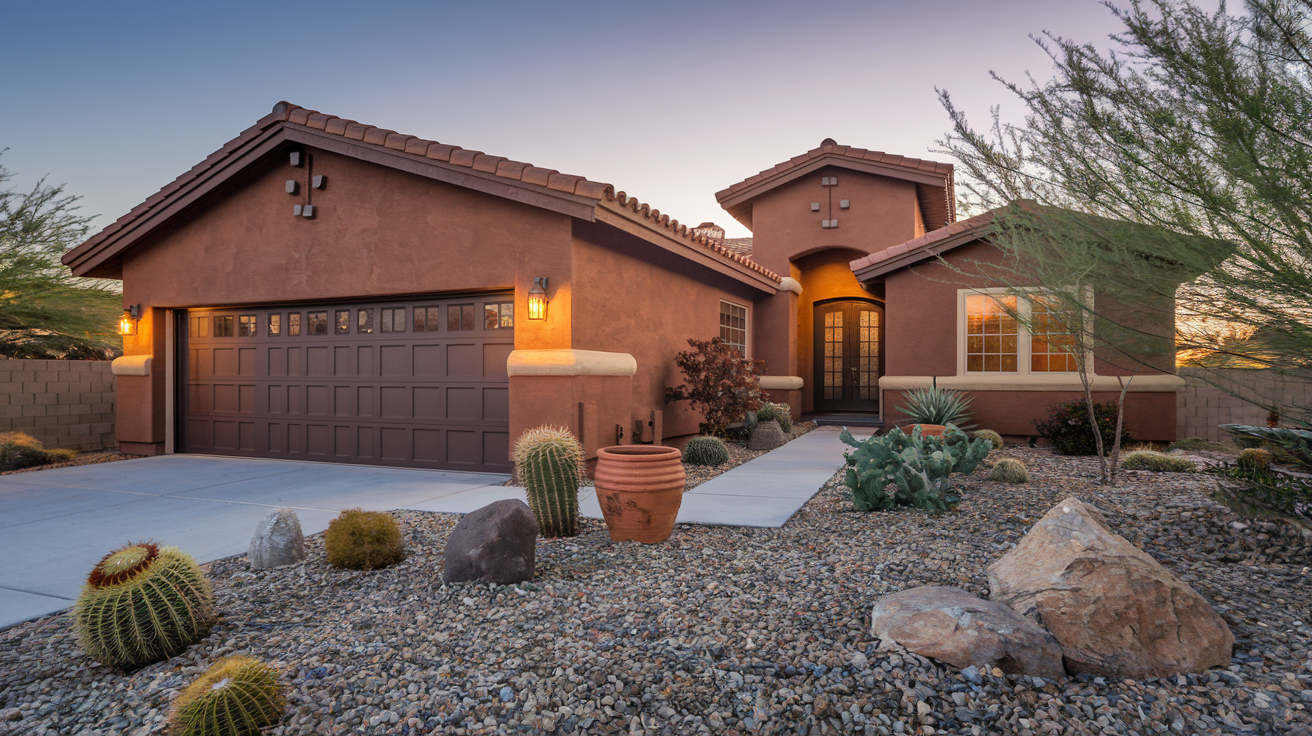
Copper brown siding brings a rich, earthy color to your home’s exterior. It echoes the tones of aged copper or natural clay, offering a bold yet grounded presence.
This shade looks stunning with stone landscaping, green trees, and neutral or dark trim, making it perfect for rustic or modern-rustic homes.
15. Stone Gray

Stone gray is a steady, grounded neutral inspired by natural rock formations.
It’s a great siding choice for homes with stone borders, wood trim, or dark accents.
This cool-toned gray adds structure and blends easily with nature, offering a subtle yet sophisticated backdrop for your exterior.
16. Mocha Brown
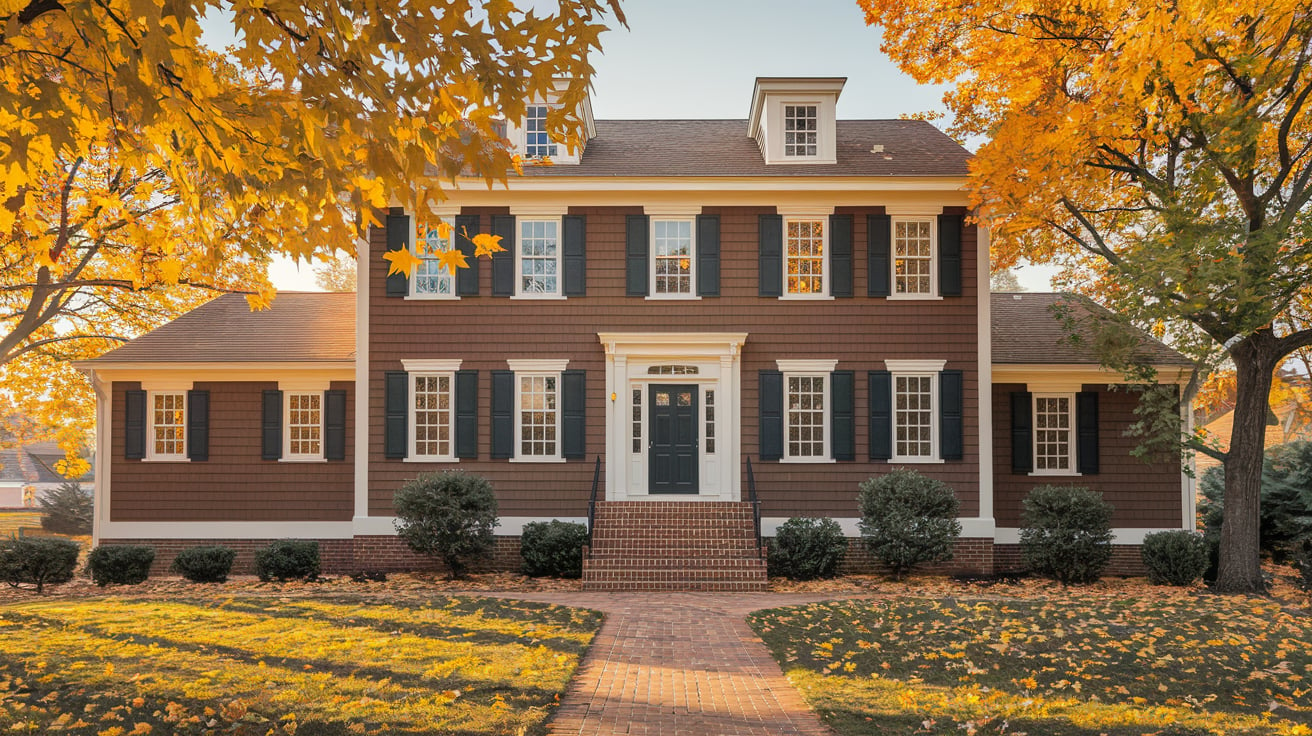
Mocha brown is a deep, warm, and cozy shade. This rich shade provides a striking contrast to tan, green, or white trim and works especially well with craftsman or traditional homes.
It exudes a strong, stable appearance while feeling inviting and timeless—a great choice for enhancing curb appeal and durability.
17. Terracotta

Terracotta siding adds a sunbaked, southwestern feel with its warm, reddish-orange hue.
It’s a bold color that works best on stucco or tile-roof homes, especially those with Mediterranean or Spanish-inspired architecture.
Pair it with wood beams, iron fixtures, or cream trim for a striking, earthy exterior.
18. Charcoal Black

Charcoal black siding delivers a modern, dramatic look that stands out in all the right ways.
This deep tone contrasts beautifully with wood, metal, or stone features, adding instant sophistication.
It’s ideal for minimalist or modern homes seeking a bold, sleek presence that still feels grounded.
19. Midnight Blue

Midnight blue is a rich, saturated hue that feels bold yet timeless.
Darker than navy, this shade adds drama and style to any home, especially when paired with warm wood, brass fixtures, or white trim.
It’s great for making a statement while still staying classic and refined.
20. Black Forest

Black Forest is a deep near-black with hints of green, adding depth and mood to your exterior.
It’s a fantastic choice for wooded or rural settings, where it blends with the environment while offering a touch of sophistication.
Pair it with natural wood, stone, or muted trim for best results.
21. Slate Gray
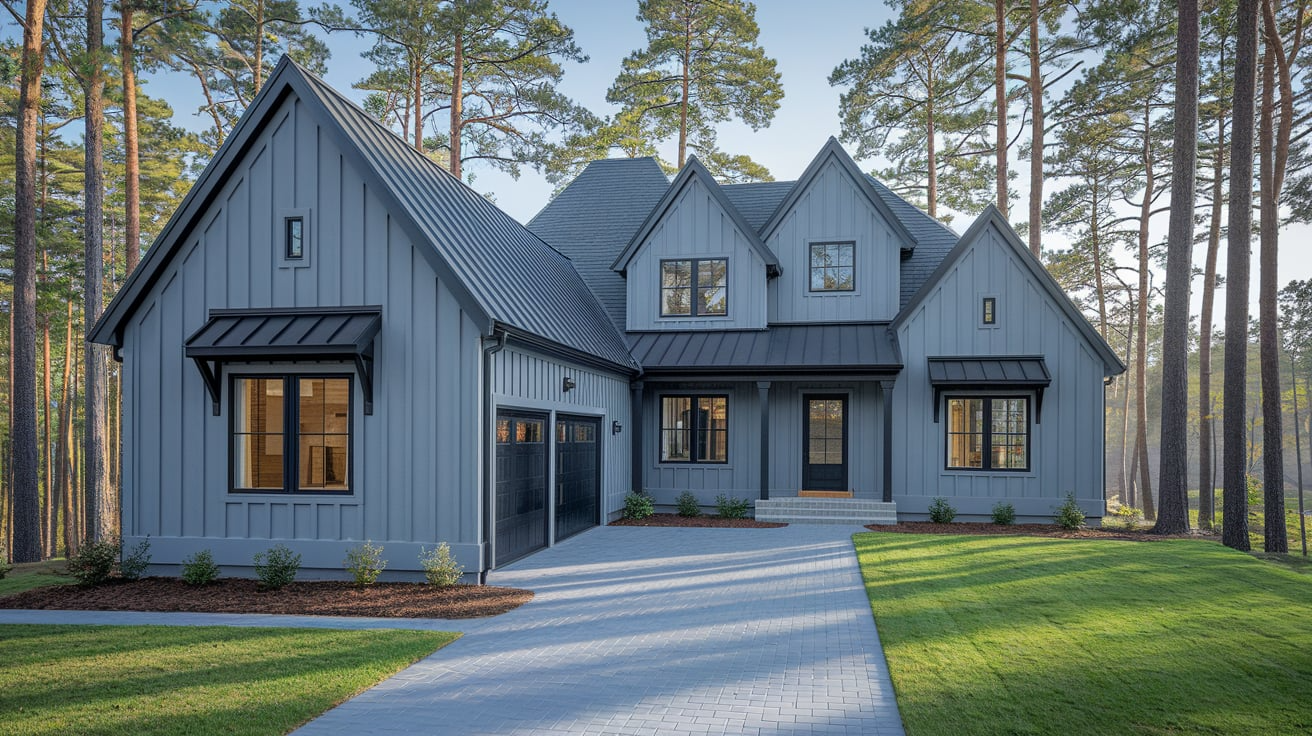
Slate gray is a modern, cool-toned gray with a strong architectural feel. It’s a popular choice for contemporary homes or updated traditional styles.
This mid-tone gray works well with white, black, or wood trim and adds clean, structured contrast that enhances curb appeal without being flashy.
22. Steel Blue
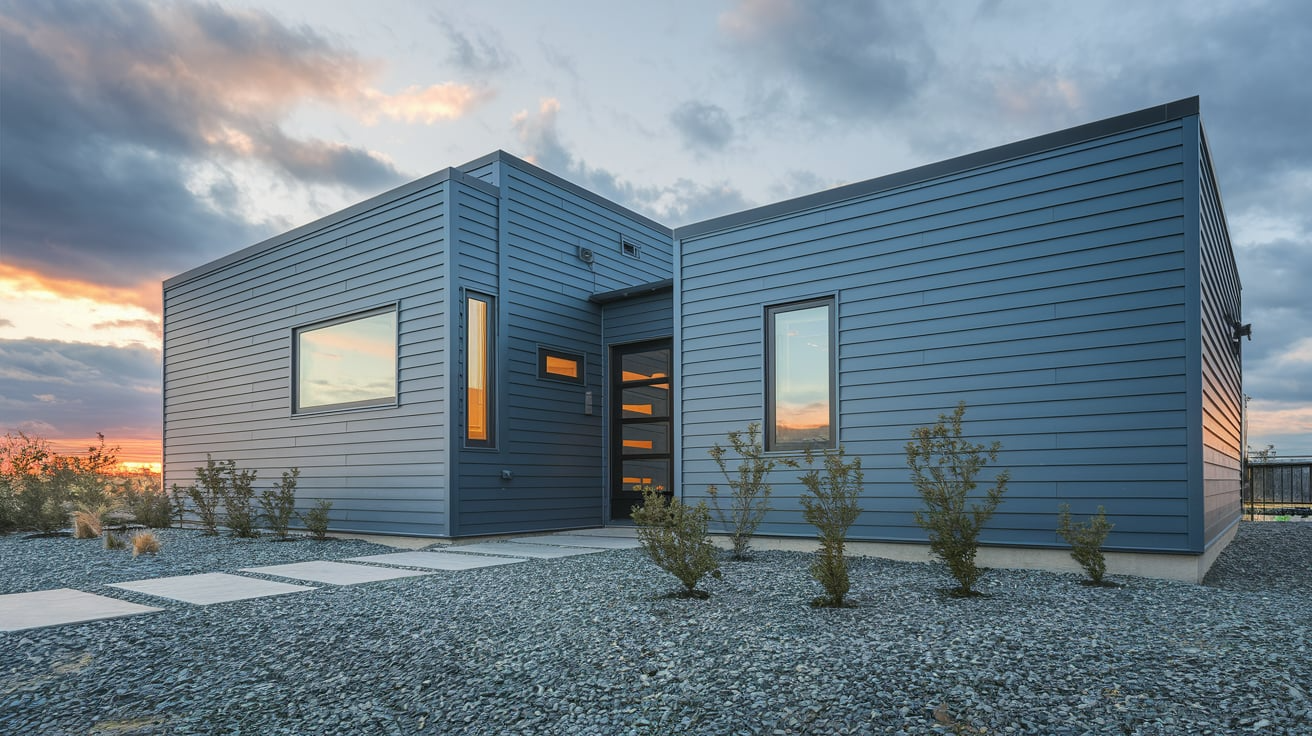
Steel blue is sleek, industrial, and forward-looking. This strong blue-gray tone is ideal for modern or minimalist homes.
It pairs well with metal roofs, black hardware, or clean landscaping, offering a cool-toned exterior that stands out without being overly loud or trendy.
23. Ocean Teal

Ocean teal combines blue and green for a vibrant, bold look that feels refreshing and modern. It’s a fun choice for coastal homes or those looking to add personality.
Teal pairs nicely with white or wood trim and looks especially good with ocean-inspired decor or bright outdoor accents.
24. Pumpkin Spice

Pumpkin spice siding brings a cozy, fall-inspired warmth to rustic or farmhouse homes.
This burnt orange shade feels cheerful and grounded, especially when combined with wood, stone, or cream-colored trim.
It’s bold enough to make an impression, yet warm enough to remain welcoming and homey.
25. Dusty Rose

Dusty rose adds vintage charm and soft color to your home’s exterior.
This gentle pink tone is subtle yet eye-catching, ideal for cottage-style homes or anyone seeking a touch of romance.
It works beautifully with white trim, climbing roses, and quaint porches for an extra charming vibe.
26. Soft Yellow

Soft yellow is a cheerful and inviting color, perfect for traditional or colonial homes. It creates a bright, sunny exterior that feels full of life.
Paired with white trim and lush green landscaping, this color helps your home stand out in a joyful way while still maintaining a classic and timeless appeal.
27. Cool Mint

Cool mint is a light, refreshing greenish-blue that adds personality without being overpowering.
This playful shade works best on beach cottages or bungalows with bright accents and airy porches.
Pair it with white trim, a colorful front door, or nautical decor for a fresh, breezy look.
28. Blush Beige

Blush beige is a soft neutral with just a hint of pink, adding gentle warmth to your exterior. It’s ideal for modern or transitional homes seeking a subtle twist on traditional beige.
This color pairs beautifully with clean landscaping, black or white trim, and minimal, clean-lined details.
29. Pale Blue

Pale blue offers a calm, beachy vibe perfect for coastal or cottage-style homes.
This airy shade pairs best with white railings, porches, or shutters and feels especially peaceful in the sunlight.
Pale blue creates a relaxed, open, and charming atmosphere, perfect for a laid-back, breezy curb appeal.
30. Barn Red

Barn red is a strong, traditional choice with deep American roots.
This classic color suits farmhouses and country homes, standing out beautifully with white trim, black hardware, or rustic stone.
It brings warmth and nostalgia to your exterior while offering bold contrast and timeless appeal.
31. Navy Blue
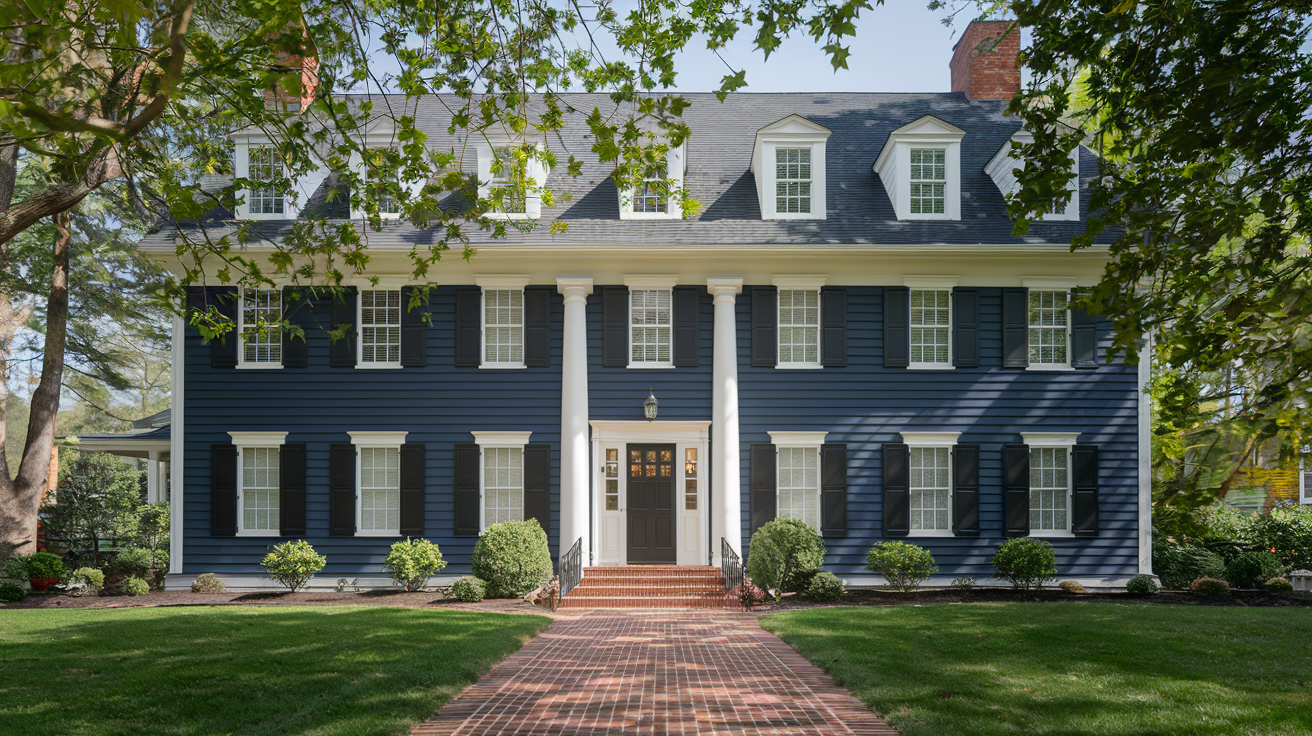
Navy blue siding is sophisticated, deep, and endlessly stylish. It suits colonial, coastal, or Cape Cod-style homes and works with nearly any trim color.
Navy adds rich depth without going too dark, making it a reliable option for homeowners who want a timeless, elegant exterior.
32. Sandstone Beige

Sandstone beige is warm, soft, and easy to love. It’s a versatile siding color that suits both suburban and traditional homes.
This earthy neutral pairs beautifully with brick, tan roofs, or cream trim and blends naturally with outdoor landscapes, giving your home a calm, balanced appearance.
33. Arctic White
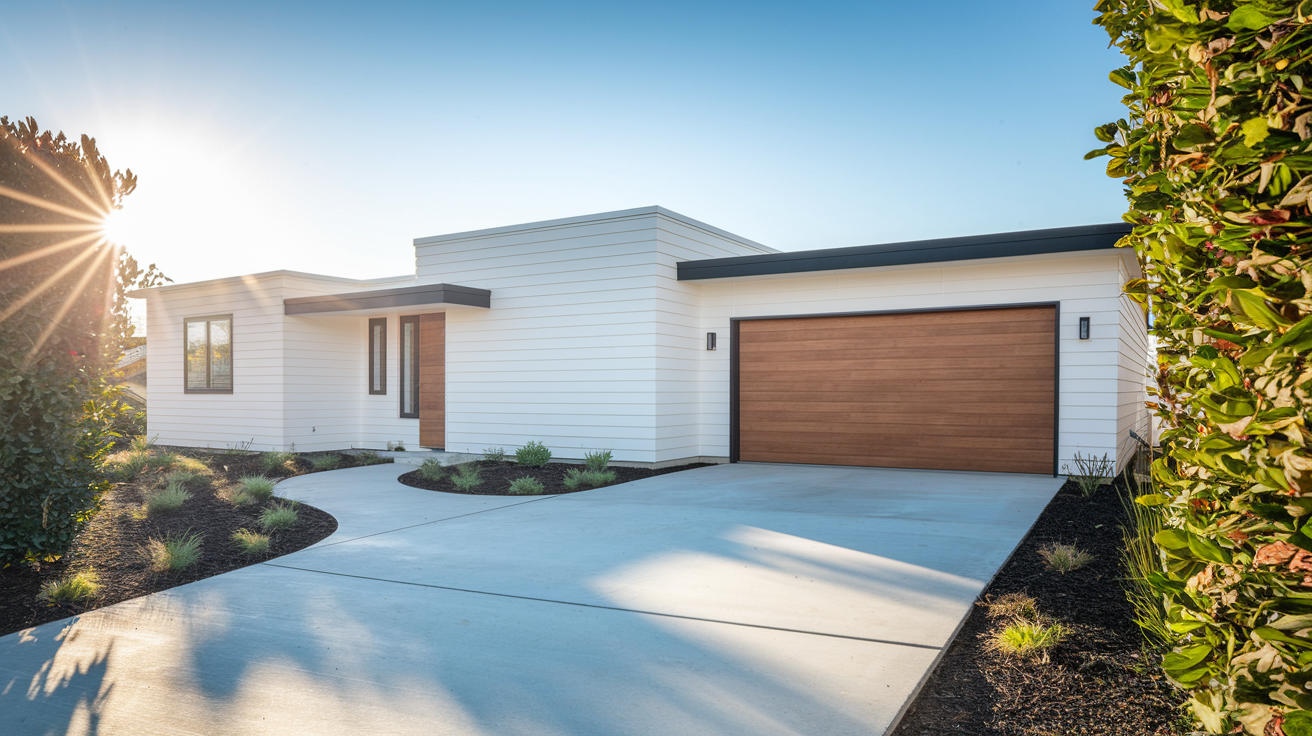
Arctic white is crisp, clean, and ideal for modern homes. Its bright surface reflects light, making it perfect for sunny climates.
This shade looks especially sharp with black windows, wood accents, or metal roofing. If you want a sharp, minimalist look with strong contrast, Arctic white delivers.
What to Consider Before Choosing a Siding Color
Before picking your siding color, think beyond your favorite shade. It should work with your home, location, and long-term goals.
- Neighborhood Look: Do you want to blend in or stand out? Stick to similar tones if your area has a set style. Go bold, but not too loud, if you want something unique.
- Sun and Weather: Light colors reflect heat and stay cooler. Dark shades may fade faster in strong sun. Think about your local climate.
- Home Style: Match your color to your home’s design. Navy works well on colonials; soft greens fit farmhouses and craftsman homes.
- Roof and Trim: Make sure the siding color goes with your roof, trim, and other features. Matching tones look clean and put-together.
- Personal Style: Choose a color that fits your vibe. Cool grays feel calm and modern; warm browns and greens feel cozy and natural.
A little planning now will help your home look great for years to come.
Tips for Choosing the Right Siding Color
Picking a siding color may seem simple, but a few common mistakes can lead to regret or expensive do-overs. Avoiding errors is important, but knowing what to do can make the process easier and more fun.
- Test Colors on All Sides of Your Home: Sunlight hits different sides of your house in different ways. A color that looks perfect on the front might feel too dark or too light on another wall.
- Look at Colors Throughout the Day: Check your siding samples at various times of the day, including morning, afternoon, and evening. Natural light changes everything; what looks soft at noon could seem harsh at dusk.
- Coordinate with Roof and Trim: Your siding should complement your existing roof and trim, not conflict with them. If your roof has warm tones, stick with warm-toned siding for a harmonious look.
- Consider Landscaping and Surroundings: Think about trees, shrubs, flowers, or nearby buildings. A good siding color complements the setting and doesn’t get lost in the background, or stand out in a bad way.
- Stick with Colors You Truly Love: Trends come and go. Choose a color that feels right to you, not just what’s popular. If it makes you smile every time you pull into the driveway, you’ve nailed it.
Conclusion
Choosing the right siding color is more than a style decision; it’s a long-term investment in your home’s beauty, character, and value.
The right shade can highlight your home’s best features, complement your surroundings, and create a look that feels just right.
Before making your final decision, always test your favorite colors on your actual siding.
View them in natural light at different times of day to see how they truly look in your environment.
Whether you lean toward bold and modern or soft and classic, there’s a siding color out there that fits your home perfectly.
Which color caught your eye? Pin your favorites or share your top pick in the comments!





